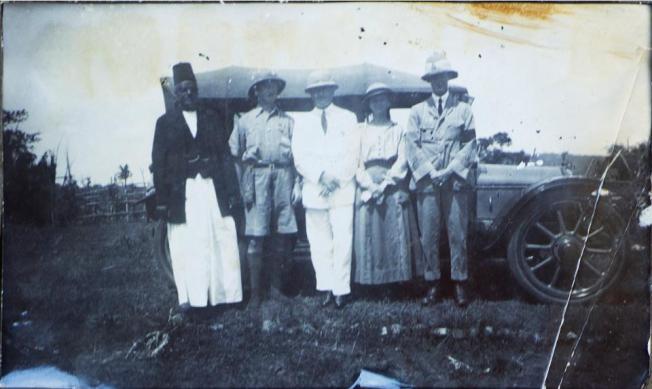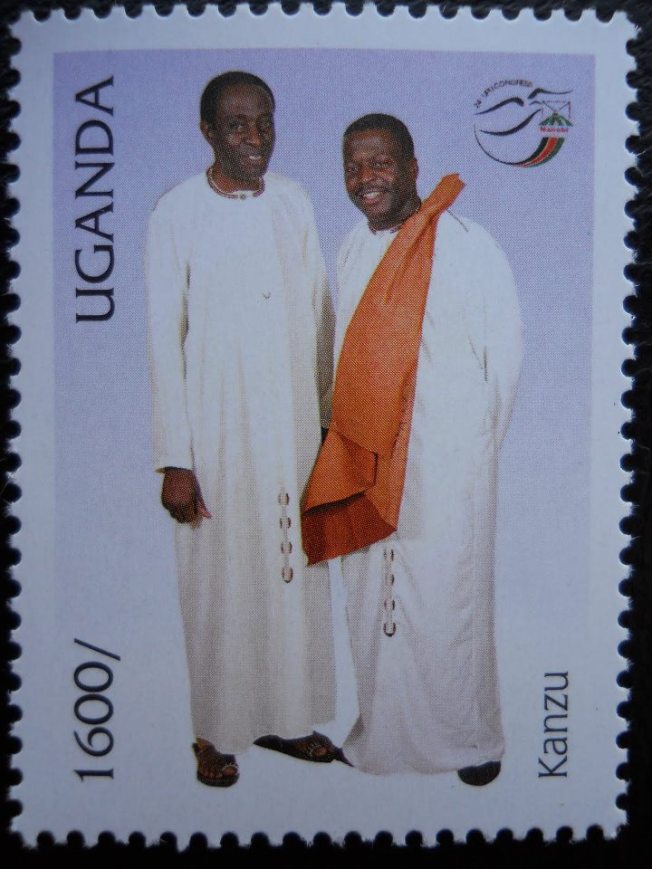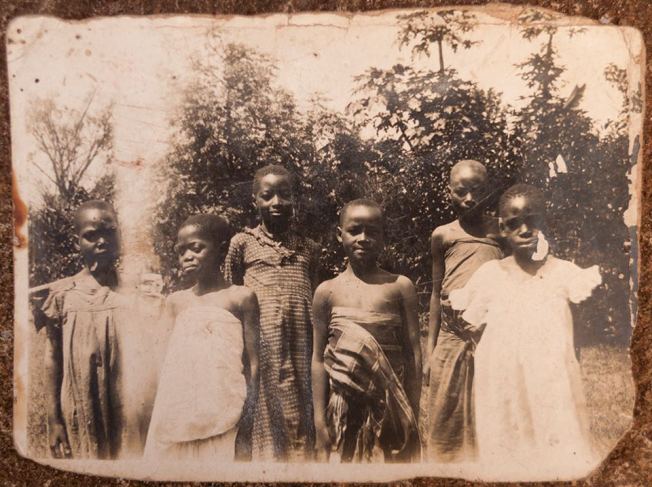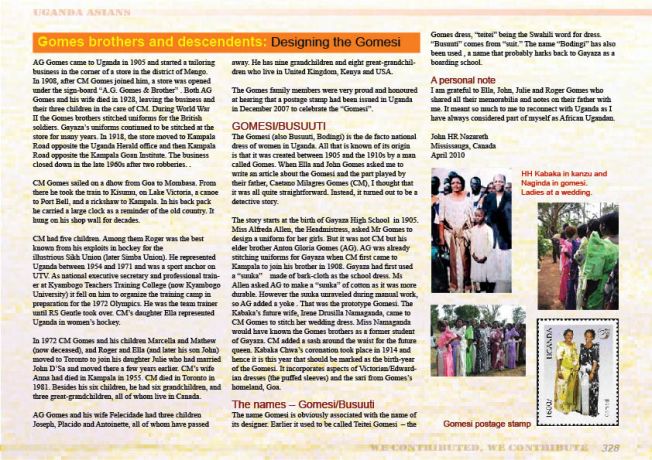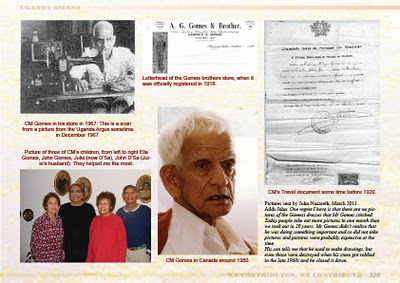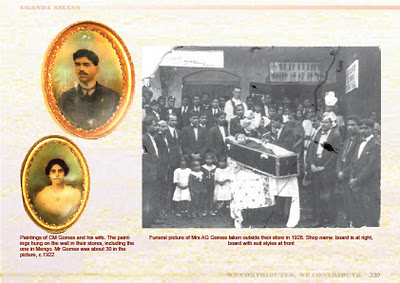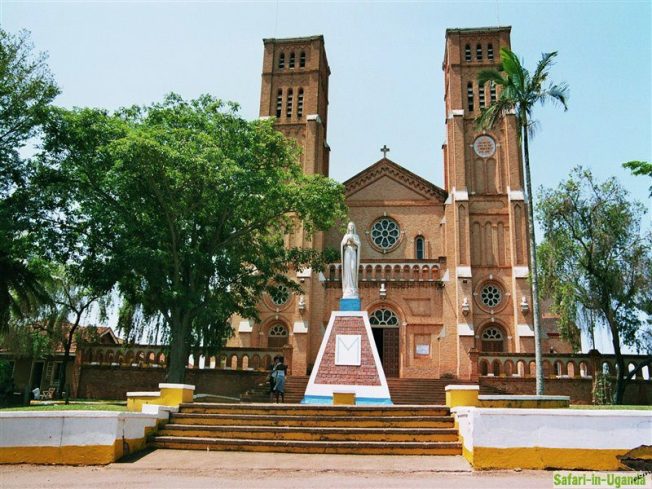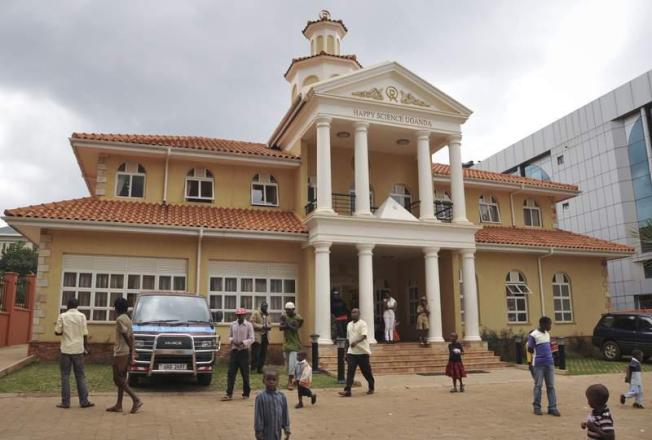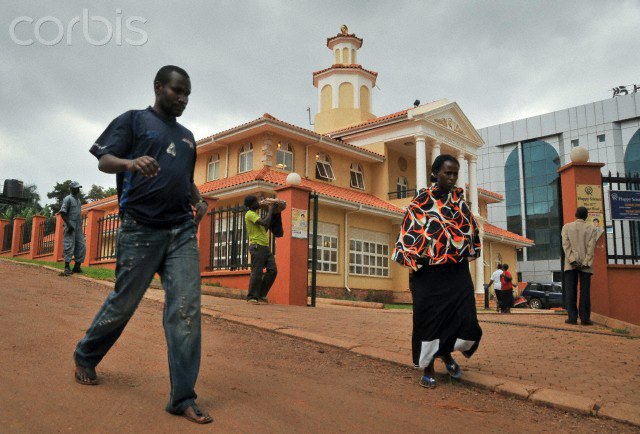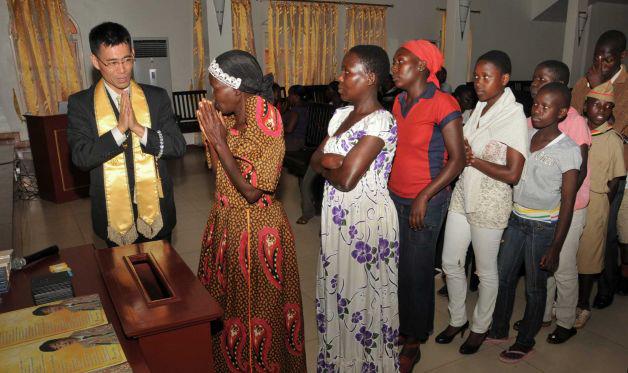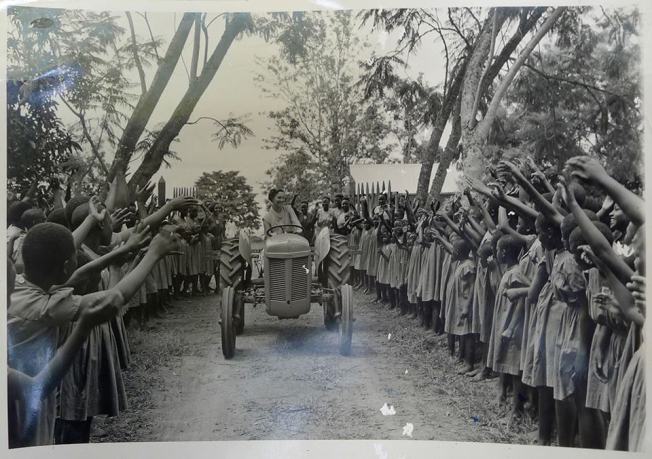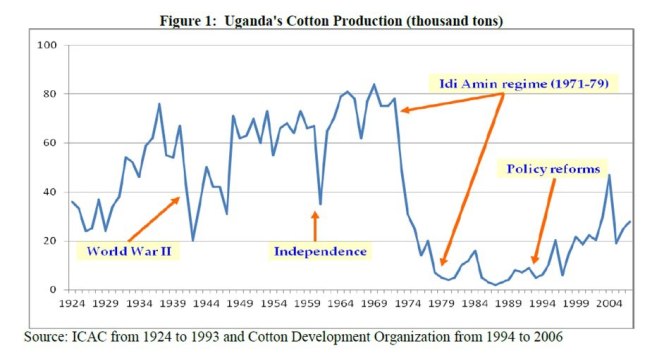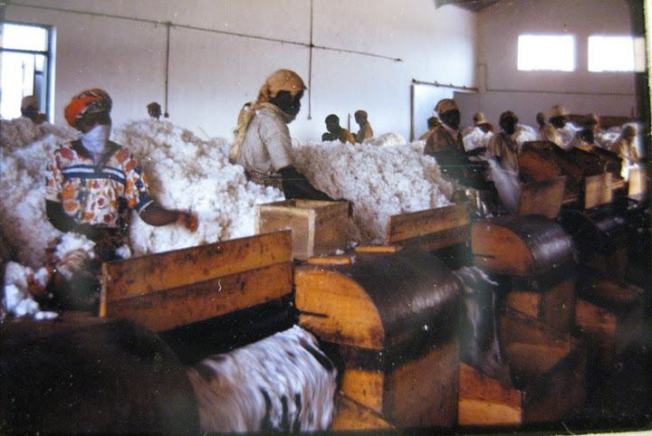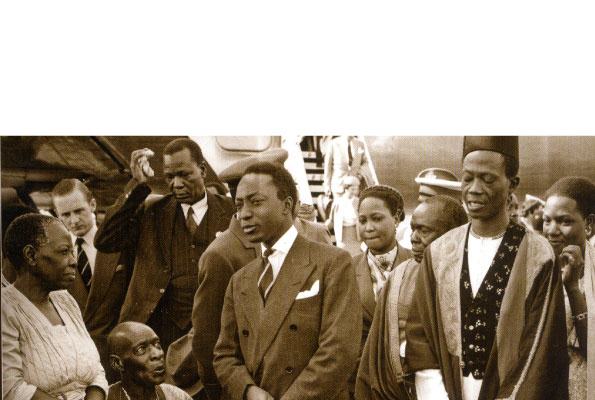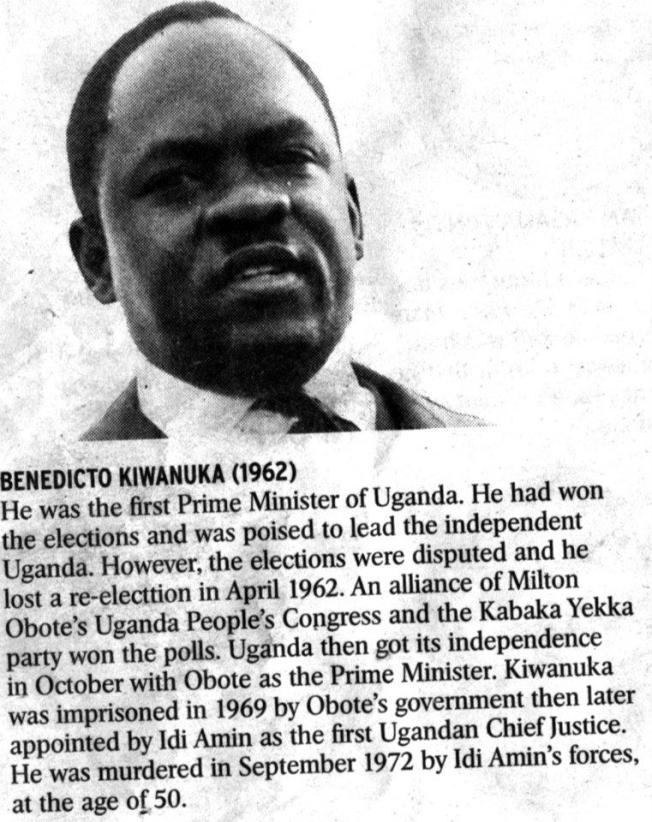
Ben was dreaming of Uganda’s independence when all other politician including the regime iniBuganda were fast a sleep.A brilliant Lawyer as well!
One of the reasons why he formed the democratic party(D.P) was in response to the marginalisation of people of the catholic faith in Buganda by then.
Remember Uganda was a British protectorate and most Britons were Protestants,furthermore the King embrased the Anglican(Protestant) ,thus ensuring the Anglican hegemony which was also the basis of the coalition between UPC and KY.
Professor Mazrui a reknown African scholar who was lectured at Makerere University but hails from Kenya,described Uganda as the Northern Ireland of Africa.Just like Northern Ireland,ugandan politics has been largely influenced by religion,which is sad!I think all ugandans lost out from this “madness” because it eventually gave rise to Amin!!!
In the late 1960s Uganda was in a state of instability. After strengthening his military base, Idi Amin overthrew Obote’s government and forcibly took control in 1971. Amin plunged Uganda into a deep crisis and an era of ruthless persecution.
Confusion surrounded Kiwanuka’s arrest in September of 1972. Witnesses reported that armed men seized him, although a military spokesman denied the arrest and suggested that government impostors may have been responsible for the capture of several important officials. Shortly after, Amin’s forces murdered him. Kiwanuka was one of many people slaughtered during Amin’s reigning years of chaos and terror. In his book Uganda Since Independence: A Story of Unfulfilled Hopes, Phares Mutibwa asserted that Amin murdered Kiwanuka because he perceived him to be a potential rival leader.
History has it that the Late Benedicto Kiwanuka was a disciplinarian.On one occasion,he dismissed a magistrate from duty for late comming and drunkeness.This magistrate was a close friend of the late Dr Sembeguya who was the first Ugandan doctor to venture into private medical practice.It was said that when Mr Kiwanuka was murdered the Doctor organised a “party” for his demise,as a sign of pay back for having fired his magistrate friend.Late after afew months,Amins men came for the doctor’s life!Any lesson to learn???????????

Abu Mayanja was the first Secretary General of UNC ( Uganda National Congress ) in 1950’s. Abu Mayanja was the minister of Health in Idi Amins Government.He is now late!died some years ago.
DP was founded mainly as a party to challenge the Royal ruling class which was mainly Anglican.Thus you find that most DP suppoters up to today are Roman Catholics.Uganda having been a British protectorate and most British were Anglicans,made sure that power does not go to the catholics.Thus Bishop Brown the Archbishop then in uganda had to advise them on a coalition.Obote was anglican and so was the Monarchy thus a marriage of convinience was consumated between UPC and KY.
Each party thought after doing away with the common enemy(DP),one would out manoever the other.Obote was more cunning and the rest is history.It was this greed,sectarianism,egos which has led to the bleeding of uganda up to today.I think if DP had won i doubt if Amin would have surfaced on the scene!remember Obote appointed Amin whom he felt could use to intimidate his opponents.A very sad piece of history filled with “what if’s”.
Politics is such a funny BUT deadly venture at the same time. on second thoughts I should say weird thing that in the process of putting power in hands of certain group leads to such chaos and brutality that couple of generations of the innocent people pay a heavy price and many others perished for ever….very sad indeed.
Religious descrimination was rife in Buganda in terms of job opportunities and caused a lot of tension.Late Ben Kiwanuka saw Uganda as a nationalist while the traditionalist had a narrow view.At the end of the day the traditionalists were the biggest losers in terms of property and lives!!!
A quiz question most people failed during our time, and may still fail today: Who was the first Prime Minister of Uganda?Answer is NOT Apollo Milton Obote.Benedicto Kiwanuka was the Chief Minister from July 1961 to February 1962. On 1st March 1962 he was appointed the first Prime Minister[P.S. I know even Wikipedia has it wrong just like most historians in Uganda].
OTHER IMPORTANT HISTORICAL EVENTS IN UGANDA
1500 – Bito dynasties of Buganda, Bunyoro and Ankole founded by Nilotic-speaking immigrants from present-day southeastern Sudan.
1700 – Buganda begins to expand at the expense of Bunyoro.
1800 – Buganda controls territory bordering Lake Victoria from the Victoria Nile to the Kagera river.
1840s – Muslim traders from the Indian Ocean coast exchange firearms, cloth and beads for the ivory and slaves of Buganda.
1862 – British explorer John Hanning Speke becomes the first European to visit Buganda.
1875 – Bugandan King Mutesa I allows Christian missionaries to enter his realm.
1877 – Members of the British Missionary Society arrive in Buganda.
1879 – Members of the French Roman Catholic White Fathers arrive.
1890 – Britain and Germany sign treaty giving Britain rights to what was to become Uganda.
1892 – Imperial British East Africa Company agent Frederick Lugard extends the company’s control to southern Uganda and helps the Protestant missionaries to prevail over their Catholic counterparts in Buganda.
1894 – Uganda becomes a British protectorate.
1900 – Britain signs agreement with Buganda giving it autonomy and turning it into a constitutional monarchy controlled mainly by Protestant chiefs.
1902 – The Eastern province of Uganda transferred to the Kenya.
1904 – Commercial cultivation of cotton begins.
1921 – Uganda given a legislative council, but its first African member not admitted till 1945.
1958 – Uganda given internal self-government. Elections held in 1961 – Benedicto Kiwanuka elected Chief Minister.
1962 – Uganda becomes independent with Milton Obote as prime minister and with Buganda enjoying considerable autonomy.
1963 – Uganda becomes a republic with Buganda’s King Mutesa II as president.
1966 – Milton Obote ends Buganda’s autonomy and promotes himself to the presidency.
1967 – New constitution vests considerable power in the president.
1971 – Milton Obote toppled in coup led by Army chief Idi Amin.
1972 – Amin expels Israelis giving them 2 weeks to leave.
1972 – Amin orders Asians who were not Ugandan citizens – around 60,000 people – to leave the country in 3 months.
1972-73 – Uganda engages in border clashes with Tanzania.
1976 – Idi Amin declares himself president for life and claims parts of Kenya.
1978 – Uganda invades Tanzania with a view to annexing Kagera region.
1979 – Tanzania invades Uganda, unifying the various anti-Amin forces under the Uganda National Liberation Front and forcing Amin to flee the country; Yusufu Lule installed as president, but is quickly replaced by Godfrey Binaisa.
1980 – Binaisa overthrown by the army.
1980 – Milton Obote becomes president after elections.
1981-86 Following the bitterly disputed elections, Ugandan bush war fought by National Resistance Army
1985 – Obote deposed in military coup and is replaced by Tito Okello.
1986 – National Resistance Army rebels take Kampala and install Yoweri Museveni as president.
1993 – Museveni restores the traditional kings, including the king of Buganda, but without political power.
1995 – New constitution legalizes political parties but maintains the ban on political activity.
1996 – Museveni returned to office in Uganda’s first direct presidential election.
2000 – Ugandans vote to reject multi-party politics in favour of continuing Museveni’s “no-party” system.
2001 January – East African Community (EAC) re-inaugurated in Arusha, Tanzania, laying groundwork for common East African passport, flag, economic and monetary integration. Members are Tanzania, Uganda and Kenya.
2001 March – Museveni wins another term in office, beating his rival Kizza Besigye by 69% to 28%. Campaign against rebels
2002 October – Army evacuates more than 400,000 civilians caught up in fight against cult-like LRA which continues its brutal attacks on villages.
2003 May – Uganda pulls out last of its troops from eastern DR Congo. Tens of thousands of DR Congo civilians seek asylum in Uganda.
2004 December – Government and LRA rebels hold their first face-to-face talks, but there is no breakthrough in ending the insurgency.
2005 July – Parliament approves a constitutional amendment which scraps presidential term limits. Voters in a referendum overwhelmingly back a return to multi-party politics.
2005 October – International Criminal Court issues arrest warrants for five LRA commanders, including leader Joseph Kony.
2006 February – President Museveni wins multi-party elections, taking 59% of the vote against the 37% share of his rival, Kizza Besigye.
2006 August – The government and the LRA sign a truce aimed at ending their long-running conflict. Subsequent peace talks are marred by regular walk-outs.
2007 March – Ugandan peacekeepers deploy in Somalia as part of an African Union mission to help stabilise the country.
2008 February – Government and the Lord’s Resistance Army sign what is meant to be a permanent ceasefire at talks in Juba, Sudan.
2008 November – The leader of the Lord’s Resistance Army, Joseph Kony, again fails to turn up for the signing of a peace agreement. Ugandan, South Sudanese and DR Congo armies launch offensive against LRA bases.
2009 The UK oil explorer Heritage Oil says it has made a major oil find in Uganda.
2009 March – Ugandan army begins to withdraw from DR Congo, where it had pursued Lord’s Resistance Army rebels.
2009 December – Parliament votes to ban female circumcision. Anyone convicted of the practice will face 10 years in jail or a life sentence if a victim dies.
2010 January – President Museveni distances himself from the anti-homosexuality Bill, saying the ruling party MP who proposed the bill did so as an individual. The European Union and United States had condemned the bill.
2010 July – Two bomb attacks on people watching World Cup final at a restaurant and a rugby club in Kampala kill at least 74 people. The Somali Islamist group Al-Shabab says it was behind the blasts.
2011 February – Museveni wins his fourth presidential election.
2011 July – US deploys special forces personnel to help Uganda combat LRA rebels.
2012 Aug- Uganda’s Stephen Kiprotich winS the Gold Medal in Marathon at the Olympics ,Uganda,s second Gold medal ever, and third Olympic medal since joining the Olympics.

